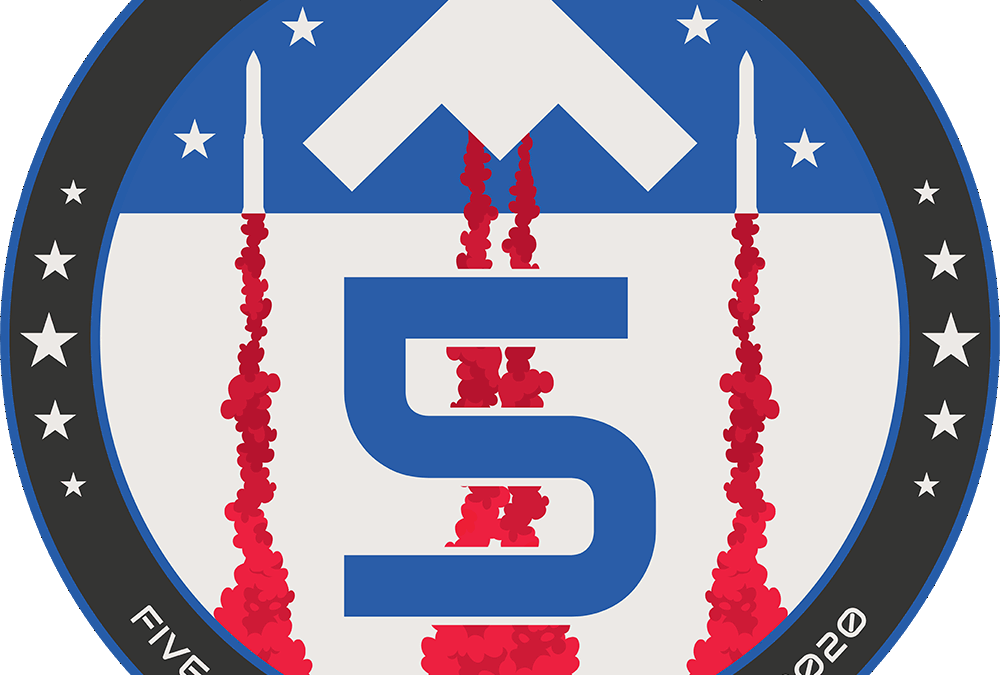By Sean Green | Facilitation and Outreach Manager
BOSSIER CITY, La. — In just five years, the STRIKEWERX Innovation Hub has uncovered new solutions that can save hundreds of millions of dollars for Air Force Global Strike Command (AFGSC).
Housed at the Cyber Innovation Center (CIC) in Bossier City, Louisiana, STRIKEWERX has used its space and resources to foster collaboration and innovation, leading to the creation of new technologies that support the warfighter.
“STRIKEWERX was stood up as a collaborative venue where the best minds could gather, think creatively on how to revitalize the nuclear mission, and continue to increase lethality,” said CIC President Kevin Nolten. “Our results show that this initiative, supported by a skilled team, is continuing to deliver for our partners in the command.”
As the innovation arm of the AFGSC Office of the Chief Scientist, STRIKEWERX connects government, industry and academia to solve the command’s most difficult problems.
“STRIKEWERX was established as the Air Force Global Strike Command Innovation Hub to engage partners in new and efficient ways,” said Dr. Donna Senft, AFGSC Chief Scientist. “It has successfully provided outreach to traditional and non-traditional technology providers who have delivered many solutions to our needs and requirements.”
Since 2020, the STRIKEWERX Innovation Hub has hosted four challenge events and 11 design sprints with an estimated savings of more than $233 million for the U.S. Air Force (USAF).
Challenge events are a series of collaborative efforts with government subject matter experts, industry, small businesses, and academia to inform market research that can help solve a command gap. These include:
- Emergency Aircrew Response – Led to the development of IoT/AI’s PicoBadge, which is pushing development of a novel wearable sensor technology to help improve operational energy decision support and individual alerting.
- Air Refueling Simulator – Market research that led to a partnership with Specular Theory to refine their Experiential Air Refueling Lightweight simulator (EARL) for training B-52 Stratofortress aircrew members on aerial refueling. The EARL has the potential to save $5.8 million annually and has been expanded to include other partners such as Air Mobility Command.
- Advanced Training Concepts – Resulted in three new advanced training prototypes for Explosive Ordnance Disposal (EOD); the E-4B Nightwatch aircraft communications maintenance, which serves as the National Airborne Operations Center (NAOC) — a key component of the National Military Command System for the President, Secretary of Defense, and the Joint Chiefs of Staff; and B-52 Stratofortress communications. The success of the EOD trainer has led to it being expanded to more locations within the command thanks to additional funding from Defense Threat Reduction Agency, while the B-52 communications trainer is the first application made available for non-secure communications across the USAF.

“From our very first challenge in fall 2020 to our most recent culminating this spring, STRIKEWERX delivers valuable market research to our partners in the command,” said Russ Mathers, STRIKEWERX Director. “By finding non-traditional government contractors with new technology, we have been able to save millions in acquisition costs and move quickly to deliver solutions to the command.”
Design sprints are typically a five-day process that brings together a team of business, industry, and government to define a less complex challenge, understand its needs, create a prototype solution, and test that prototype. These sprints include:
- Designing of a cover for the Transport Erector Jack Stand, which has since been refined, scaled and is in use at 450 AFGSC missile launch facilities.
- Constructing a new jig for more efficiently and safely drilling B-52 brake pads, which will save $124,000 per year and 14-man hours per week.
- Analyzed engine pod covers for the B-52 Stratofortress to prevent ice buildup, which was later refined via collaboration with Transhield. The new covers have the potential to save $5.66 million in damages and 2,500 manhours per year.
- Developed a rapidly-inflatable, tent-like prototype to protect Airmen from extreme cold and heat while working on the Intercontinental Ballistic Missile (ICBM) Advanced Extremely High Frequency Antenna. The prototype is expected to cut maintenance time by 50%.
“The design sprint speaks to the heart of what STRIKEWERX is about — having smart people bring in better ideas to help solve problems quickly,” said William Weiford, STRIKEWERX Deputy Director.
In its brief five-year history, STRIKEWERX has supported 164 events for more than 3,600 attendees with an estimated local economic impact north of $773,000. Its most recent success is the expansion of its footprint and capabilities at the CIC with the opening of the Innovation Lab in late 2024. Across nearly 2,000 square feet, the space houses new equipment, encouraging further innovation in the form of augmented reality and virtual reality (AR/VR) headsets, modeling and simulation computers, 3D printers, a 3D scanner, prototyping space, and teleconferencing capabilities.
The innovation continues into 2025 and beyond, as STRIKEWERX began testing their latest prototype this same month. This new type of technology aims to push research and development for countering Unmanned Aerial Systems (UAS) by combining kinetic interceptors, detection technology, and electronic warfare into a single, mobile system that they are calling the Stationary and Mobile UAS Reveal and Intercept (SAMURAI) System.
“The CIC and STRIKEWERX will continue to deliver never-before-seen prototypes like the recent SAMURAI mobile drone killer,” Nolten added. “We’ve accomplished so much in only five years, and this is just the tip of the iceberg.”


